

1
Read some of our great articles on a range of parenting topics from sleeping to teething. We publish new blog posts regularly and feature a number of baby sleep experts and their top tips
Filter by tag:
Tags...Aug 19 2020
Posted by: SnoozeShade HQ
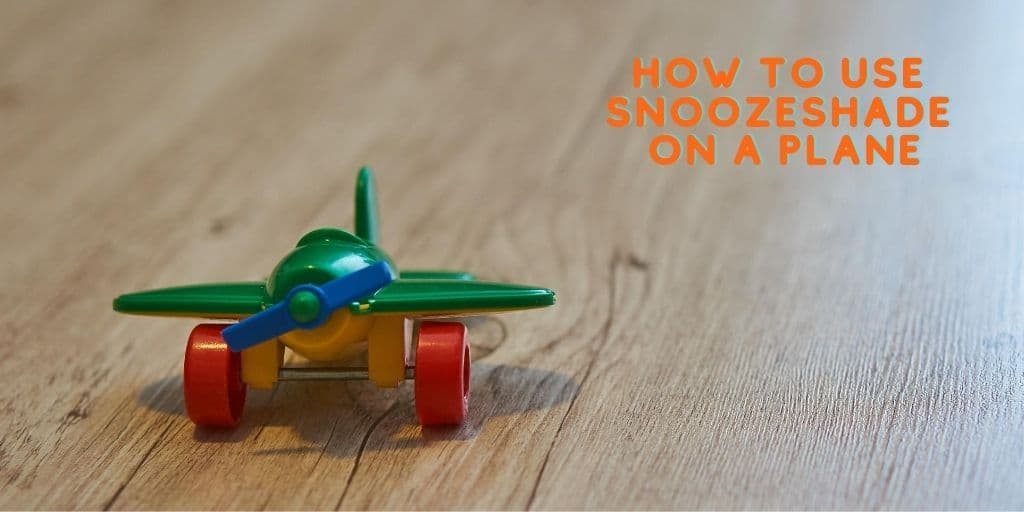
One question that gets asked quite frequently is whether SnoozeShade products can be used in a plane over a long haul flight’s baby sky cot airline bassinet.
The answer is YES and in many more ways than I thought possible … on long and short haul flights.
SnoozeShade can truly be your best friend when travelling with a baby or toddler. You can use it over the stroller in the airport until you board your flight so no worries if your flight is delayed and baby needs to sleep in a busy airport.
Going somewhere hot needn’t be a problem as SnoozeShade products block UV and keep baby skin safe from the sun. It also stops mosquitoes and other biting bugs.
Many of our parents have reported very creative ways to use our products and some of the ways are shown below.

One of the parent hacks we like is to use a baby toy arch over the bassinet and then place a SnoozeShade over the top so it creates the effect of a carrycot hood. You can see that in the picture above.
You simply then attach the toy arch – something like the one below from Amazon will work. Then place SnoozeShade over the top.
SnoozeShade can also be used to create a calm environment over your plane seat (good for you as well as a baby) on a short haul flight to block cabin lights.

We have worked with Carrie from Flying With A Baby for many years and she has a great guide to knowing what kind of airplane bassinet or sky cot the airline you are flying with will have onboard. Click here to get more guidance

Aug 09 2020
Posted by: SnoozeShade HQ

I get asked a lot if the SnoozeShade for Pack n Play fits the triangular style travel cribs eg
The answer is YES as you can see from these photos sent by happy customers.
Here on the Guava Lotus
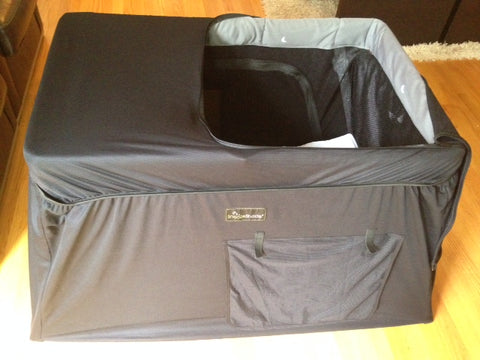
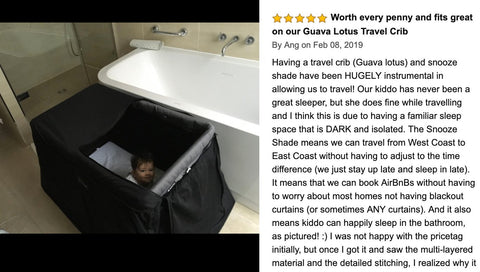
Here it is on the BabyBjorn
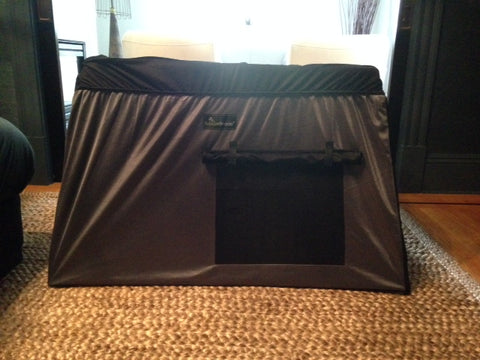
This is it on the BabyBjorn again
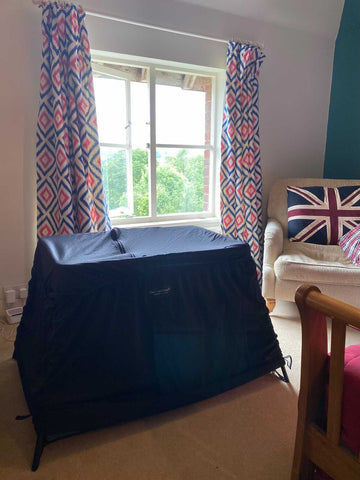
Read why some of our customers are raving about this nifty baby travel essential!
Click to buy our best-selling pack’n’play sleep shade now…
Apr 19 2020
Posted by: SnoozeShade HQ

Sleep is one of the most discussed topics for babies and young children. How much they sleep, babies who won’t sleep, what keeps them from sleeping and how to establish a good sleep routine are all things new parents discuss endlessly.
But how do you know how much sleep your baby should have or how does their sleep pattern change as they grow?
Here are some helpful pointers that sleep experts have observed over the years.
Why does a child’s sleep pattern change?
Babies have different needs for sleep depending on their age. At birth they will sleep almost all of the time (though usually in quite short spans).
Gradually, a baby begins to sleep for longer stretches and has their longest span of sleep during the night, with naps during the day. Eventually, a child will be able to stay awake in the day and sleep during the night.
As you’ll see from the chart below, a newborn baby will sleep an average of 16 to 18 hours per day. That’s usually broken into eight or nine hours in the daytime and eight hours at night. Usually at this age, their sleep duration is about an hour or two. This is because they need to keep waking to feed and they also wake if their nappy needs a change.
By the time they reach around three months, babies may be able to sleep through the night, though most will still wake for a feed at night. Around 60% of babies can sleep through at six months. This may of course be disturbed by things such as illnesses and disturbances such as teething. At this age, you can start to establish a sleep routine.
Interestingly, the way babies sleep is actually different to adults and they have shorter cycles of sleep and fewer patches of rapid eye movement sleep (REM), during which we dream.
What are the average sleep durations for children from birth to five years?
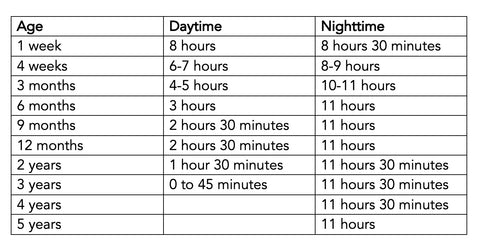
These are only average times as all babies are different. Some may sleep through the night from an early age, while others might still be waking well into their second or third year.
What might change?
Sometimes babies who have been having a good and established sleep routine will regress and start having sleepless patches again. This can be due to a number of things:
Baby sleep cues
You will start to recognise signs that your baby is tired as they will exhibit types of behaviour. When you spot these signs, you will know that it’s soon time for a nap or for bed.
They may:
When you see this, it’s time for that bedtime routine and light out!
Apr 14 2020
Posted by: SnoozeShade HQ
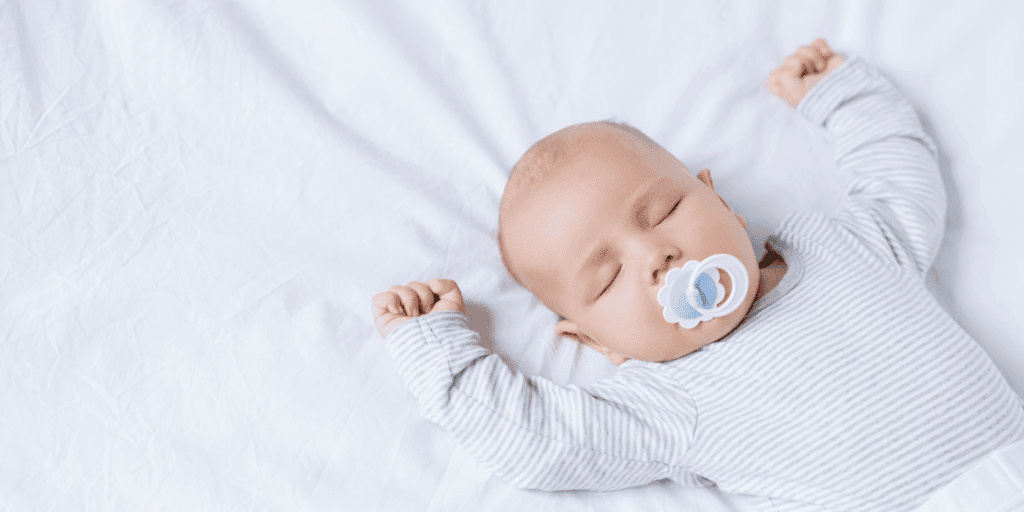
It doesn’t take long for those dreaded little words “How is your baby sleeping?” to come up in a parent-to-parent conversation.
Some parents dodge the question by saying everything is fine – others dive into a long story about their child’s sleep habits.
For some families, the nights of disrupted sleep can go on for months, even years, yet it needn’t be that way. Every child is different but assuming that your baby is healthy, you can expect your child to start to get 12 hours of night time sleep between the ages of three and six months.
If your child is six months or older and is still not sleeping through the night, here are some simple steps you can take to improve the length of your child’s sleep during the night.
Seven tips to help your baby to sleep through the night
Make a positive change now
Research shows that 84% of children who experience sleep problems continue to have them up to five years. That’s a long time for a family to function on reduced sleep and a long time to fight those bedtime battles. If you have not established a good sleep routine yet, don’t despair – it’s never too late to start changing your child’s sleep patterns. It can be hard but in the long run, making positive changes now will make everyone feel better and be more well-rested – and a whole lot happier!
Need some help?
Infant and Child Sleep Consultant Karen Bramall from Baby Sleep The Night has a decade of experience and has worked with thousands of families to solve their children’s sleep difficulties with her gentle, caring methods. Karen now trains others in her line of work and on her website, you will find a whole team of Baby Sleep Experts.
Some further helpful reading:
How long should my baby sleep?
How many naps does my baby need?
How to cope with sleep regressions
Mar 16 2020
Posted by: SnoozeShade HQ

If you’ve worked hard to get your baby’s sleep into a great routine that works well you’ll know how frustrating it is when something comes along and messes it up, teething, travel and the clocks changing are all frustrating but unavoidable!
Here are four tips for making the spring clock-change easier to cope with…
A week before the clocks ‘spring forward’ start your evening bedtime routine ten minutes early, then next day add another ten minutes and so on until the evening of the clock change you’ll be bang on time. If your baby is pretty easy going around sleep times then you can shorten the process to two or three days and do 20 or 30 minute leaps.
With this method your baby should wake up at the new ‘correct’ time on the morning that the clocks changed.
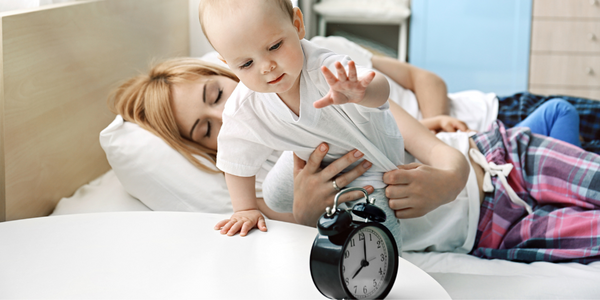
Keep your bedtime routines the same as normal, despite the times changing. For older toddlers it can be beneficial to do a late afternoon walk or park trip to get rid of some extra energy, add a little tiredness to counteract the earlier bedtimes.
It can be beneficial to slightly lengthen daytime naps if possible the day before the clocks change, an overtired baby may struggle to get to sleep. If you’re out and about then SnoozeShade will help extend a nap!
It shouldn’t take too long for your baby (and you!) to adapt to the new times if you follow these guidelines, but be prepared for some later mornings (hopefully!)
Further Reading:
Clocks Going Back and Baby Sleep
How to Handle Baby Sleep When The Clocks Go Back
Tips for Coping With The Clock Change
Feb 24 2020
Posted by: SnoozeShade HQ

Sleep Expert Karen Bramall shares her experience and advice with us…
With Spring nearly here and the return of sunlight to our mornings, I’d like to share some tips with you to ensure that your little ones don’t suddenly start deciding that morning is here when the birds do!
The best environment for us all to sleep in is darkness, and I’m talking about developing photos dark! It helps to suppress the hormones cortisol and adrenalin and encourages melatonin, the sleepy one to be released.
Our Circadian Rhythm (or body clock) is set by daylight, which is I tell families I work with to keep the bedroom very dark at night. When your set wake time comes around to take your baby or toddler out of the bedroom, expose them to lots of light and make a big deal of it being morning.
This will even help with newborns who many parents report do not know the difference between night and day, they’re right! Babies sleep patterns do not fully start to follow light/dark cycles until around 6 weeks of age when their circadian rhythm starts to develop.
With those light mornings coming around again make sure you have a good blackout blind, and no gaps where light can sneak in around the edges. Us adults can turn over when it’s light outside, see the clock at 5am and realise we have more time before the alarm goes off. Your baby can’t do this and so when they see daylight they (quite reasonably) think that morning is here and it’s time to get up.
In the early mornings, if the dawn chorus from the birds is an issue then a white noise machine can be a great tool for drowning out their exuberance! If you use one it must be on all night including bedtime.
Similarly, for naps on the run, making a nice dark environment is a huge help in settling to sleep and resettling at the end of sleep cycles.
One in ten parents admits that getting their children to go to sleep is a ‘struggle’. If you have a baby, toddler or child who doesn’t sleep the night through then it really doesn’t have to be that way!
Implementing any kind of change can be hard work so if you would like some support on your journey to great sleep then there is help available.
Infant and Child Sleep Consultant Karen Bramall from Baby Sleep The Night has a decade of experience and has worked with thousands of families to solve their children’s sleep difficulties with her gentle caring methods.
Feb 03 2020
Posted by: SnoozeShade HQ
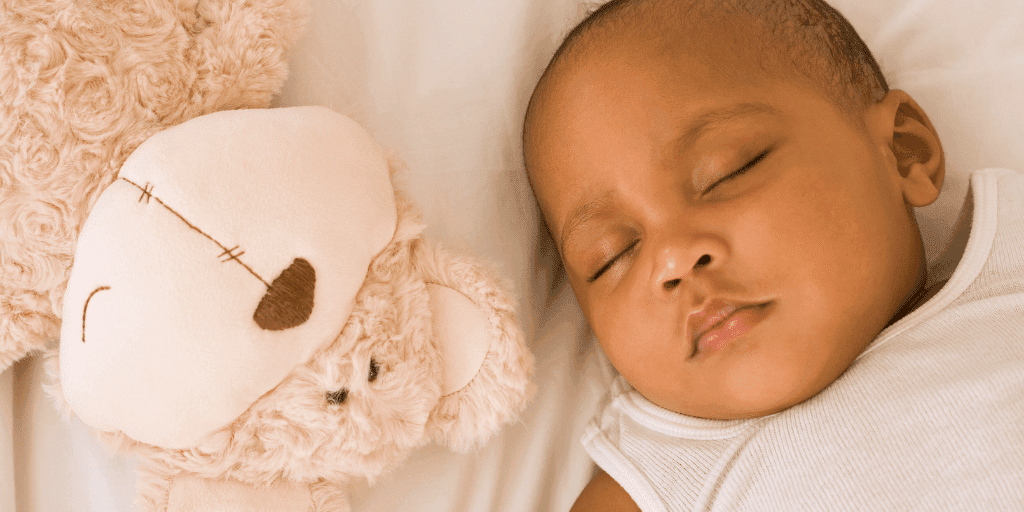
by Nicole Johnson, Founder and Lead Consultant of The Baby Sleep Site®
A sleep regression is considered a time when a baby, who was sleeping well, suddenly starts waking a lot at night and/or taking short naps. During the first year, there are at least three sleep regressions that many babies experience and can be exhausting for parents. Here are five top tips to deal with sleep regressions in the first year:
Although babies often have a six-week growth spurt that may temporarily disrupt their sleep, the first sleep regression in the first year is typically the four-month-sleep regression. Around this age, a baby’s brain develops and his sleep becomes more like that of an adult. Your baby now spends less time in deep sleep and goes through more sleep cycles. As your baby becomes more aware of the world, you will want to help him shut out external stimuli.
For example, you can turn on white noise to drown out external sounds and darken your baby’s room to help promote longer naps. If you like to get out with the baby, you can use SnoozeShade to darken the pushchair or stroller. Here are a few things to make sure you have for your baby or your baby’s nursery:
One of the most common reasons for frequent night-waking and short naps is that your baby gets over-tired. If your baby is awake too long, it is usually harder to fall asleep and most importantly, stay asleep. So, one of the most important things you can do is put your baby on an age-appropriate sleep and feeding schedule. Here are the most important questions to consider when setting your baby’s schedule:
Answering these questions will help you fine-tune your baby’s schedule to fit his or her needs better. Every baby has unique sleep needs. While some babies take longer naps and sleep less at night, some babies sleep more at night and less during the day. It’s important to help your baby find the right balance.
Making a routine to follow before every sleep period is not only good for your baby but good for you, too. By following a set series of steps, you will make sure you’ve ticked all the boxes to set up your baby for success, while also signalling to your baby that sleep is on the horizon. A good bedtime routine does not have to be long or complicated, though. Keep in mind that you don’t want your routine to be so long that you put your baby to bed too late, especially on a night you might be running late due to a family gathering, for example. Here is a very common bedtime routine for a baby in their first year:
The routine need not take very long – 10 to 20 minutes should suffice, though routines get longer in the toddler years. A nap routine is also important and should be an abbreviated version of your bedtime routine. You will not give a bath, nor do you need to change your baby’s clothes for a nap.
The second most disruptive sleep association in the first year is the eight-month sleep regression. This sleep regression lasts three to six weeks on average and can start anytime in the eighth, ninth, or 10th month. For most babies, this happens when they start learning to sit up, stand up, pull up and become more mobile. Their minds are very busy and it’s a very exciting time – for both you and them! Give your baby ample playtime during the day to explore and practice their new abilities. This way, they are less likely to do it in their bed when they should be sleeping. Do expect them to want time to practice in bed as well, however. Everything is new and novel, so plan sleep times accordingly. If it’s taking your baby 10-20 minutes longer to fall asleep for example, put them down a bit earlier for their next sleep time so they have time to play and then fall asleep “on time.”
After the four-month sleep regression, when your baby starts going through more sleep cycles, they need to learn how to go BACK to sleep. The best way for them to learn this skill is to first go TO sleep on their own, without help from you. So, after your bedtime routine, try to put your baby down when he or she is relaxed and drowsy but awake.
As they master going to sleep from a very drowsy state, they may be able to learn to go to sleep from a more and more awake state. This will help them get through all the sleep regressions with more ease. If your baby had colic, you may be a bit more apprehensive about putting them down awake because some babies will fuss or cry when you do that. Take heart that you can go as slow or as fast as feels comfortable to you. Gradually reduce how much “work” you do to put your baby to sleep and he or she will begin to adapt.
How a baby sleeps is a lot more complicated than you may have originally thought but following your intuition (and learning to trust it!) can go a long way. Just always remember that all babies are different and unique and so will, too, be your parenting.
Nicole Johnson is a married mother of two wonderful boys and founder and lead sleep consultant, of The Baby Sleep Site. When her eldest son was born, he had a lot of sleep problems – he would wake every one or two hours, all night long. She got busy and thoroughly researched literature and scientific reports until she became an expert in sleep methods, scheduling routines, baby developmental needs and more. She overcame her son’s sleeping issues in a way that matched her own parenting style and knew it was her mission to help other tired parents “find their child’s sleep”.

If you have your own sleep issues, Nicole and her team at The Baby Sleep Site® can help! Download the popular free guide, Five Ways To Help Your Child Sleep Through The Night
Further Reading:
A Month-by-Month Guide to Sleep Regression
Does Teething Lead to Sleep Regression?
The Two Year Sleep Regression – What You Need to Know!
Dec 22 2019
Posted by: SnoozeShade HQ
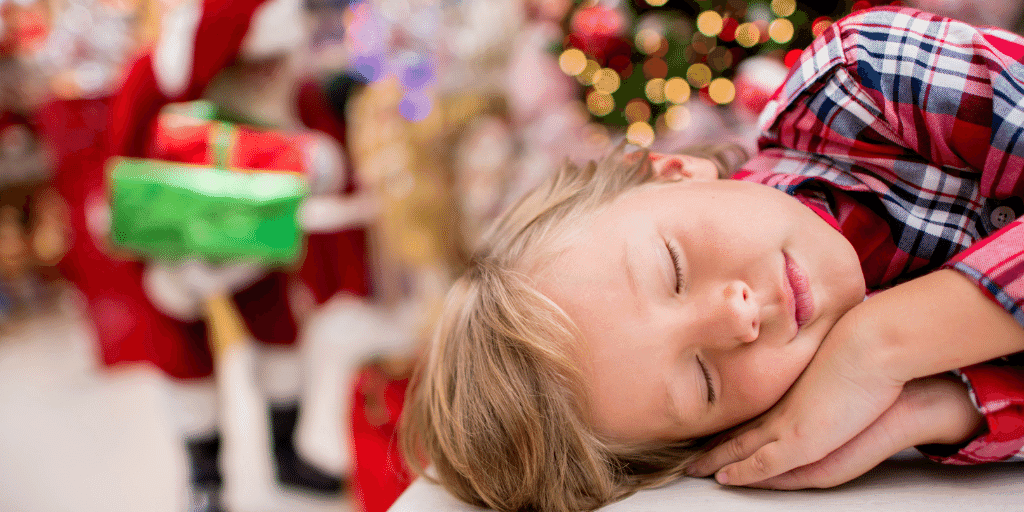
Now, how on earth are you going to get them to settle down for bed? Here are some Christmas Eve baby sleep tips that might help!
Christmas is all about traditions and there is no better time than now to make some new ones with your new family. Christmas Eve traditions should be calming and quiet, helping to encourage your children to settle down and relax if they can. Some of our favourite Christmas bedtime routine ideas include:
Make sure they get lots of fresh air during the day. Keeping busy will bash boredom as well as stopping the endless questions about when Santa is coming, what he’s bringing and so on. Fresh air and exercise will help your little one sleep later, too, so pop them in the pushchair with your SnoozeShade in place for when they drop off. Another good tip is to avoid too much sugar throughout the day and especially in the evenings.

Kids like to know what’s going on, so let them help write, post and deliver Christmas cards. Let them help decorate the Christmas tree, make some mince pies and get them to help set the Christmas table too. Let them help with any little job that they are capable of.
Make some rules. You can expect that little ones will be excited and reluctant to go to sleep but you must make sure that the kids are aware of your boundaries. Maybe they can stay up a little later than usual, as long as they go straight to sleep when it’s bed time.
What time will your little ones be going to bed on Christmas Eve?
Further Reading:
Seven Tips for Mastering Your Baby’s Sleep Routine Over Christmas
Going Away on Vacation with Babies and Toddlers At Christmas
Three Tips for Dealing with an Over Tired Baby at Christmas
Dec 16 2019
Posted by: SnoozeShade HQ
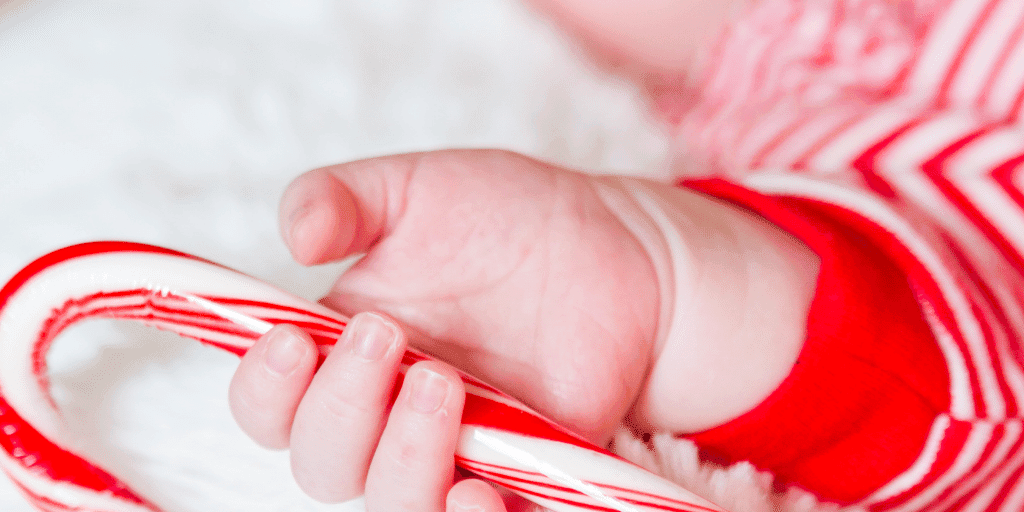
And why not too? Routines should be flexible enough to allow room for extra visits or later nights. But what happens if it all becomes too much? Here are three tips for dealing with an over tired baby at Christmas…
First of all, it’s important to be able to recognise when baby is over tired. It’s not always that easy! Some babies can keep going and going right up until the point of no return. And THEN they drop with a bang! So keep an eye out for the signs, and nip it in the bud as soon as you spot them.

So simple. Pay attention to the sleep cues and get baby in bed at the first stage. But it’s not always possible. If you’re out, make sure you’re out with your SnoozeShade so that you can create a cosy nook for baby to sleep in. If you’re at home, change your plans slightly so that baby can nap in her room. If you’re visiting, either cut short the visit or ask if you can have half an hour to settle baby to sleep. The SnoozeShade for cribs is a great idea to take with you so that baby can sleep easily wherever you are.
Get Your Over Tired Baby to Sleep
It’s not easy, but it can be done.
Newborn Babies:
Basically use all of your usual techniques to help baby fall asleep.
Older babies:
Again, use your usual techniques to calm and encourage sleep.
Remember that babies need a lot more sleep than we do, and when you’re busy it’s easy to forget the usual routine and carry on with whatever you’re doing. But your guests will wait, your baby will not. Good luck!
Further Reading:
Four Easy Christmas Eve Bedtime Tips
13 Expert Sleep Tips for Your Baby and Toddler This Christmas
7 Tips for Mastering Your Baby’s Sleep Routine Over Christmas
Dec 10 2019
Posted by: SnoozeShade HQ
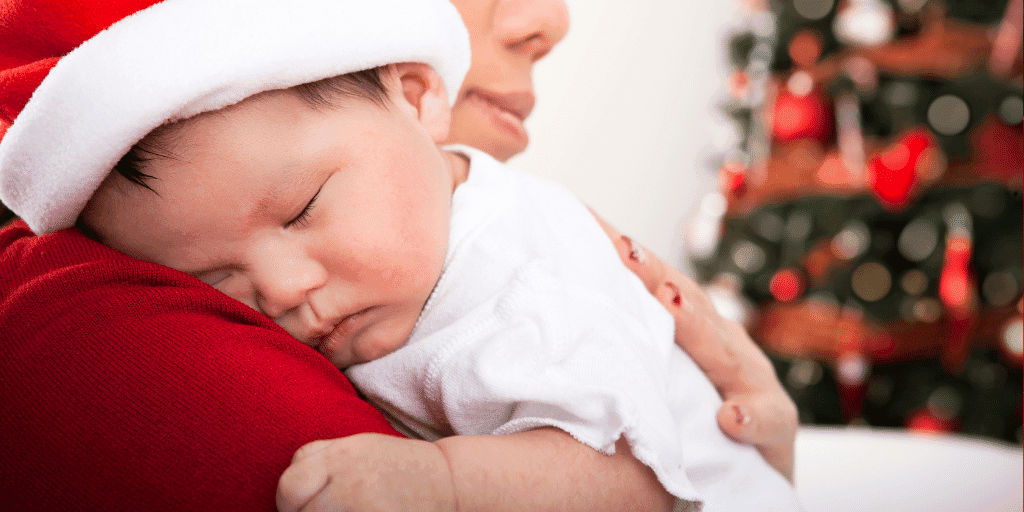
Just when you think you’ve cracked bedtime, the holidays are here which usually means a lack of routine and a much busier schedule.
We have asked our Sleep Experts for some quick and easy tips to help you with your little one’s sleep over this busy time of year.
Don’t over-schedule yourself. Late nights will only make sleep harder for your overtired child so stick to routines and bedtime as much as possible.
Don’t share a bed. If this is something that you don’t already do then don’t start it now, even for a few nights, you could find yourself having to teach them to sleep independently all over again when you get home.
Create a private space. If a separate room is unavailable then try to make some sort of private space for your baby to sleep, anywhere that you can build a partition so that if she has a night waking she is not excited to see you and thinking its playtime!
Remain calm and don’t change anything. It is very normal for children to test the boundaries around sleep when they are somewhere new, this may mean that your baby cries for some time at bedtime or has a night waking or two. The best way to deal with this is not to do much different than if you were at home, go in and offer a little reassurance every 5 minutes or so, but other than that don’t bend – even to the pressure of your well-meaning in-laws standing outside the door repeatedly asking if you’re sure the baby is ok!
Stick to a routine. If you are staying away in the Christmas holidays then stick to your baby’s routine as much as possible.
Familiar smells. Take their crib sheet and sleeping bag they’ve already slept in rather than clean ones. This way your baby will have all the familiar smells of home. And will, therefore, settle into their new surroundings better.

With all the excitement of being with family and friends over the holidays, it will be hard to keep your baby’s naps on track.
Avoid overtiredness. Make it a priority to take your little one away from the fun, to a quiet space about 15 minutes before his usual nap time. After some peaceful cuddle time with you settle your little one to sleep.
White noise machine. If there is a lot of background noise that may wake him, using white noise will help stop his naps from being disturbed.
Nap on the go. You may wish to schedule some of his naps in the pram, with a much-needed walk out in the fresh air to help you all burn off those extra calories.
Match traveling times to nap times. This works well if your baby/toddler sleeps well in the car. If your baby/toddler isn’t a fan of sleeping on the move, then it’s worthwhile investing in a new favourite toy and some snacks to keep everyone happy on the journey.
Don’t panic about later bedtime. Keeping to your rigid 7pm bedtime isn’t always possible when you’re away. It really isn’t the end of the world if they go to bed later and chances are, if anything, they will just wake a little earlier from being a bit more tired so no adverse effects!
Minimise distractions. Naps might be different and that is ok. You could try white noise and the Snoozeshade pack ‘n’ play cover if you are at someone else’s house, to minimise distractions.
Keep bedtime routine the same. Don’t forget your bedtime settling routine will be the same whilst away, so that your child will know that bedtime is coming and feel comfortable with your consistency, even if in a different environment. This is really important and will help baby to go to sleep feeling settled and relaxed. Keep the same stories, sleepy song and comforter that you’d have at home so that baby knows it’s time to sleep.
Merry Christmas from everyone at SnoozeShade x
Further Reading:
Going Away with Babies and Toddlers at Christmas
Seven Tips for Mastering Your Baby’s Sleep Over Christmas
3 Tips for a Successful Sleep Away From Home With Baby

© 2025- SnoozeShade | All rights reserved